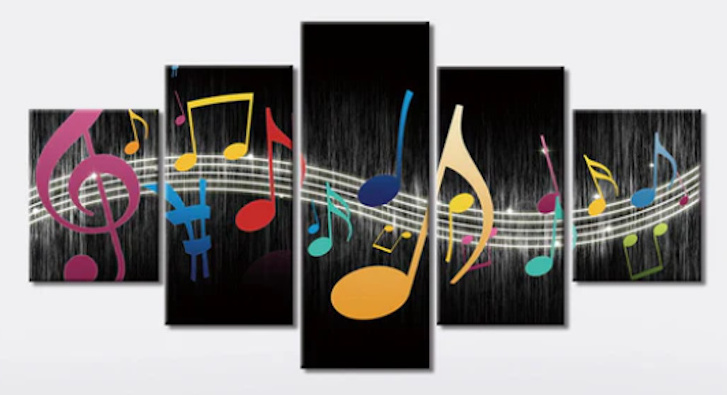
 |
|
|
|
The Evolution of Pop Music: A Journey Through Time: :Hip-Hop: The Birth of Hip-Hop: Hip-hop is one of the most influential and dynamic cultural movements of the last 50 years, evolving from a localized artistic expression into a global phenomenon. It emerged from the African American and Latino communities in the Bronx, New York, during the early 1970s and has since developed into a multifaceted genre with worldwide influence. Below is an overview of hip-hop's history and evolution. Origins: The Birth of Hip-Hop (1970s) Hip-hop was born as a response to urban decay, economic struggle, and social unrest in New York City. The South Bronx, in particular, was a neglected borough plagued by poverty and gang violence. However, young artists and DJs found ways to create a new cultural movement through music, dance, and visual art. Key figures in hip-hop's origins include: DJ Kool Herc - Considered the "father of hip-hop," he pioneered the breakbeat technique in 1973 by isolating drum breaks in funk records at block parties. Afrika Bambaataa - Founder of the Zulu Nation, he promoted hip-hop as a way to unite youth and counter gang violence. Grandmaster Flash - Innovated DJ techniques like scratching and quick mixing, further shaping the sound of hip-hop. During this time, hip-hop was largely an underground movement centered around block parties, where DJs, MCs (rappers), breakdancers (b-boys and b-girls), and graffiti artists showcased their talents. These elements DJing, MCing, breakdancing, and graffiti became the four foundational pillars of hip-hop culture. Golden Age and Mainstream Rise (1980s) The 1980s saw hip-hop transition from a local subculture to a national and international movement. Several major developments took place: Commercialization - The release of Sugarhill Gang's "Rapper's Delight" (1979) was the first mainstream rap hit, bringing hip-hop to a wider audience. New School Era - Run D.M.C., LL Cool J, and the Beastie Boys helped hip-hop break into the mainstream with a harder, more aggressive sound. Political and Conscious Rap - Public Enemy, KRS-One, and N.W.A used hip-hop to address racism, police brutality, and inner-city struggles. During this period, regional hip-hop scenes began developing, particularly in Los Angeles, which would later challenge New York's dominance. Gangsta Rap and the East-West Rivalry (1990s) The 1990s was a period of both artistic innovation and intense rivalry in hip-hop. The genre became more diverse, with the rise of gangsta rap, which depicted street life and social struggles. West Coast dominance - Led by Dr. Dre, Snoop Dogg, and Tupac Shakur, the Los Angeles based Death Row Records popularized G-Funk, a smooth, melodic style of hip-hop. East Coast response - New York rappers like The Notorious B.I.G., Nas, and Wu-Tang Clan kept East Coast hip-hop strong with lyric driven storytelling. The East-West Coast feud - A deadly rivalry between Tupac (West Coast) and Biggie (East Coast) ended with both artists being murdered in the mid-90s, leaving a lasting impact on hip-hop. The late '90s saw rap become fully mainstream, with artists like Jay-Z, DMX, and Missy Elliott reaching commercial success. Hip-Hop Diversifies (2000s) By the early 2000s, hip-hop had become a dominant force in popular music. The genre diversified into multiple subgenres: Southern Hip-Hop - Artists from Atlanta, Houston, and New Orleans, like OutKast, Lil Wayne, and UGK, brought trap music and crunk to the mainstream. Mainstream and Pop Rap - Jay-Z, Eminem, and Kanye West brought hip-hop into global pop culture. Independent and Alternative Hip-Hop -Acts like The Roots, Common, and MF DOOM explored more experimental and socially conscious themes. Hip-hop also became a global phenomenon, influencing music scenes in Europe, Latin America, and Asia. The Streaming Era and Globalization (2010s-Present) The rise of streaming platforms like Spotify, SoundCloud, and YouTube transformed hip-hop once again. SoundCloud Rap - Artists like XXXTentacion, Lil Uzi Vert, and Juice WRLD introduced emo rap and a DIY aesthetic. Trap Music Dominance - Rappers like Future, Migos, and Travis Scott brought trap music to mainstream success. Women in Hip-Hop - Nicki Minaj, Cardi B, and Megan Thee Stallion helped push female rappers into the spotlight. Global Hip-Hop - K-pop, Afrobeat, and Latin trap (Bad Bunny, J Balvin) fused hiph-op elements with regional sounds, making it a worldwide genre. Hip-hop today is more diverse and influential than ever, continuing to evolve with technology, culture, and new voices from around the world. Conclusion Hip-hop has grown from a grassroots movement in the Bronx to a global powerhouse that shapes music, fashion, and social movements. While it has undergone many changes lyrically, sonically, and commercially its essence remains rooted in storytelling, innovation, and self-expression. |
|
|